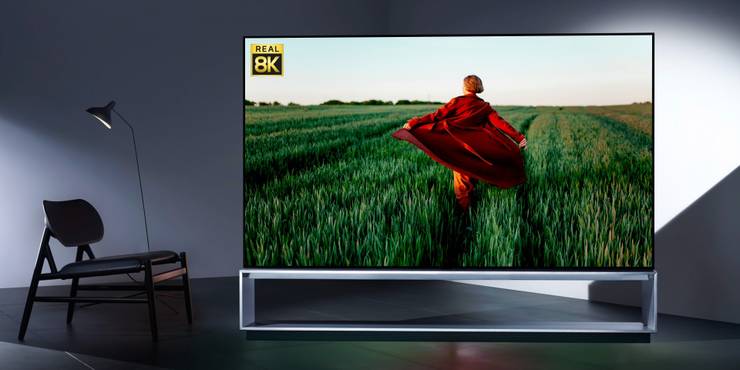8K TVs have been around for a couple of years now, and the progress seems to be steady. Currently, 4K TVs are the mainstream and most readily available option. There are a small number of 1080p TVs around, but 4K TVs are pretty much the norm nowadays. By nature, that also means that 4K is the most common resolution for streaming content.
When it comes to actual consumable content, 4K is the highest resolution unless you’re watching traditional cable TV, which is still stuck at 720 or 1080 resolutions for the most part. Streaming services, physical media such as Blu-ray, and even movie theaters typically serve up 4K. In addition to 4K, a lot of content is now available in HDR or Dolby Vision standards, making the experience more life-like.
But are 8K televisions really worth the insane cost right now? No. Costs aside, there is virtually zero content available in 8K to begin with, physical or streaming. And when it comes to streaming, most people won’t even have enough bandwidth to stream 8K content. For example, an 8K video stream would need to offer at least 50Mbps (estimated, could be higher for higher frame rate or HDR content) to play content reliably. There’s a minimal number of movies and even less TV that’s available in 8K right now.
Can You Spot The Difference?

Getting a bit technical, standard 4K UHD (16:9 aspect ratio) has a resolution of 3840×2160, giving you 8.2M pixels. 8K gives you a 7680×4320 resolution with a total of 33.1M pixels. Of course, numbers don’t lie, so 8K doubles the resolution from 4K. Pixel density will vary by the size of the display. For the vast majority of people, the difference from 4K to 8K will be imperceptible. Some people already have difficulty noticing a difference between 1080p and 4K because some viewers are too far away from the television to see the difference, but with a bigger enough screen, consumers will be able to see the improved quality. It could be the same story with from 4K to 8K.
Pixel density is more important than the resolution at this high of a resolution. This is because as the size of the display gets bigger, pixels will become larger and technically becomes less sharp. For example, a 40-inch 4K TV is technically more sharp than a 100-inch 4K TV as the pixels are packed much more tightly on the smaller TV. So the only practical reason anyone would want an 8K TV is if said TV will be super large. Because at some point, pixels will become more noticeable, and things will start looking less sharp.
So at the end of the day, is it worth researching, looking at, or even purchasing an 8K TV? No, absolutely not. We are still a long way away from 8K content becoming the norm. It likely won’t be practical for at least another several years. First, streaming services and internet providers will need massive upgrades to accommodate double the required capacity to stream 8K. But that’s only part of the puzzle. Next, TV and movie studios will need to upgrade their cameras and editing rigs to support 8K. Then, consumers can upgrade their TVs to 8K to enjoy 8K content.
Source: Which?
About The Author



